 Dr. Noah Alderman is on trial for his life, accused of murdering his stepdaughter. Her father fought ruthlessly for custody of baby Anna as a power play after Maggie suffered the relatively unknown, but common, postpartum psychosis. With his recent death, Anna reaches out to the mother she wants to know. She enters the family, which includes Noah’s 10-year-old son Caleb, with a fortune from her father and an attitude of entitlement. Her accusations of molestation against Noah rend Maggie’s heart. Though circumstantial evidence points to Noah as Anna’s killer, Maggie retains a sliver of hope, not quite able to believe he is capable of such an atrocity. A phone call with shocking news sets Maggie on an investigation that may possibly free Noah and return him to her.
Dr. Noah Alderman is on trial for his life, accused of murdering his stepdaughter. Her father fought ruthlessly for custody of baby Anna as a power play after Maggie suffered the relatively unknown, but common, postpartum psychosis. With his recent death, Anna reaches out to the mother she wants to know. She enters the family, which includes Noah’s 10-year-old son Caleb, with a fortune from her father and an attitude of entitlement. Her accusations of molestation against Noah rend Maggie’s heart. Though circumstantial evidence points to Noah as Anna’s killer, Maggie retains a sliver of hope, not quite able to believe he is capable of such an atrocity. A phone call with shocking news sets Maggie on an investigation that may possibly free Noah and return him to her.
Told in alternating timelines, moving back in time through Noah’s trial, while Maggie’s story moves forward from the initial contact with Anna, the stories come together after the trial, with the reader learning information along with the characters. In true Scottoline fashion, the reader is kept guessing who did what until the perspective-shifting bombshell, and the action fast forwards. Un-put-down-able!
I received a digital ARC through NetGalley of this fantastic novel from one of my favorite authors.
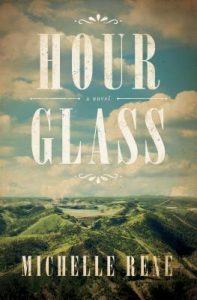 The pa of the Glass children, Jimmy and Flower, dies of smallpox in a pestilent tent hospital in Deadwood, South Dakota. They had pulled him into town from their shack on his gold claim, proving their mettle. Madame Dora DuFran takes charge, and Calamity Jane, who’d followed Wild Bill Hickok to Deadwood, works in the pest tent, caring for their pa, watching him slowly fade. Jimmy and Flower, who goes by Hour, sleep in DuFran’s storage room, which previously housed Jane, who prefers to sleep off her routine drunks outside under the stars, anyway. Hour’s mom, a Lakota, visits Jimmy in his dreams to offer wisdom as he confronts challenges (one of which is first love) in their few weeks at DuFran’s brothel, until their pa passes. Jane holds a fundraiser for her “daughter” Hour’s education, receiving enough to send both children to a convent school, giving them a good start in life. Jimmy channels Jane in a life of constant travel, but Hour marries and raises a family in Kansas City. While working as a storyteller in the Buffalo Bill Wild West Show, Jane meets up with Jimmy and they catch each other up on their lives. Jimmy sees her only once more, in a small town where she was put off the train, at a hotel on her deathbed. The happily ever after comes to Jimmy when his first love finally leaves prostitution for marriage.
The pa of the Glass children, Jimmy and Flower, dies of smallpox in a pestilent tent hospital in Deadwood, South Dakota. They had pulled him into town from their shack on his gold claim, proving their mettle. Madame Dora DuFran takes charge, and Calamity Jane, who’d followed Wild Bill Hickok to Deadwood, works in the pest tent, caring for their pa, watching him slowly fade. Jimmy and Flower, who goes by Hour, sleep in DuFran’s storage room, which previously housed Jane, who prefers to sleep off her routine drunks outside under the stars, anyway. Hour’s mom, a Lakota, visits Jimmy in his dreams to offer wisdom as he confronts challenges (one of which is first love) in their few weeks at DuFran’s brothel, until their pa passes. Jane holds a fundraiser for her “daughter” Hour’s education, receiving enough to send both children to a convent school, giving them a good start in life. Jimmy channels Jane in a life of constant travel, but Hour marries and raises a family in Kansas City. While working as a storyteller in the Buffalo Bill Wild West Show, Jane meets up with Jimmy and they catch each other up on their lives. Jimmy sees her only once more, in a small town where she was put off the train, at a hotel on her deathbed. The happily ever after comes to Jimmy when his first love finally leaves prostitution for marriage. Councillor Harold Carobleat has died, having succumbed to a lingering illness. Soon after, his neighbor and solicitor are found dead under mysterious circumstances. As both are colleagues of Carobleat, and one suspected to be intimate with Carobleat’s wife, Inspector Purbright investigates Harold’s passing as a possible murder as well, eventually connecting it all to a shady business deal.
Councillor Harold Carobleat has died, having succumbed to a lingering illness. Soon after, his neighbor and solicitor are found dead under mysterious circumstances. As both are colleagues of Carobleat, and one suspected to be intimate with Carobleat’s wife, Inspector Purbright investigates Harold’s passing as a possible murder as well, eventually connecting it all to a shady business deal. The times were not conducive for a lesbian love affair. In this fictional version of Eleanor Roosevelt’s lifelong love affair with journalist Lorena Hickok, President Roosevelt is “in on the joke” and takes advantage with his blatant womanizing. Told from the perspective of Hickok, it’s a softly rendered portrait of Eleanor, all the loveliness of her and the imperfections softened. Readers also get a peek into Bloom’s perspective of the Roosevelt clan, with snarky remarks on cousins from Hickok, Eleanor, and FDR. Throughout the story, Hickok announces character flaws and strengths of the powerful people surrounding her, ever aware of her precarious position. Readers follow her career choices, through various relationships and friendships, and her ins and outs with Eleanor, who always chooses her as an add-on to her public, political life, even after her husband’s death.
The times were not conducive for a lesbian love affair. In this fictional version of Eleanor Roosevelt’s lifelong love affair with journalist Lorena Hickok, President Roosevelt is “in on the joke” and takes advantage with his blatant womanizing. Told from the perspective of Hickok, it’s a softly rendered portrait of Eleanor, all the loveliness of her and the imperfections softened. Readers also get a peek into Bloom’s perspective of the Roosevelt clan, with snarky remarks on cousins from Hickok, Eleanor, and FDR. Throughout the story, Hickok announces character flaws and strengths of the powerful people surrounding her, ever aware of her precarious position. Readers follow her career choices, through various relationships and friendships, and her ins and outs with Eleanor, who always chooses her as an add-on to her public, political life, even after her husband’s death.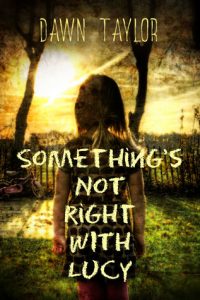 Lucy lives a hard life of a 7-year-old as the punching bag of her mother and living toy of her pedophile grandfather. All she wants is a kitten and peaceful playtime with little sister Daisy. Her father loves her, but struggles in his marriage and financially. School and Social Services fail Lucy.
Lucy lives a hard life of a 7-year-old as the punching bag of her mother and living toy of her pedophile grandfather. All she wants is a kitten and peaceful playtime with little sister Daisy. Her father loves her, but struggles in his marriage and financially. School and Social Services fail Lucy. This gorgeous, little book begins with a basic introduction to container gardening: aesthetics, placement, sunlight, tools, soil / topping, plant selection, watering, and maintenance. It’s then divided into16 chapters with succinct, descriptive headings, such as Herb Garden, Edible Petals, Southern Belle, and Rain Forest. Each chapter begins with a photo of the finished product and a quick review box of logistics: location, light, window direction, ease of care, soil / topping, water, and feed. Following is a spread of the individual plants with Latin and layman names. Step-by-step instructions have corresponding pictures. At the end, there’s a short chapter on customizing a box and another listing resources.
This gorgeous, little book begins with a basic introduction to container gardening: aesthetics, placement, sunlight, tools, soil / topping, plant selection, watering, and maintenance. It’s then divided into16 chapters with succinct, descriptive headings, such as Herb Garden, Edible Petals, Southern Belle, and Rain Forest. Each chapter begins with a photo of the finished product and a quick review box of logistics: location, light, window direction, ease of care, soil / topping, water, and feed. Following is a spread of the individual plants with Latin and layman names. Step-by-step instructions have corresponding pictures. At the end, there’s a short chapter on customizing a box and another listing resources.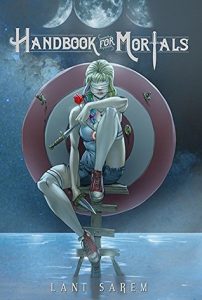 Lani Sarem spoke at a writers’ conference to give her side of the story about being the only person booted from the NYT bestseller list. She’s a good speaker–engaging, humorous, and credible. From this encounter and her summary of the story, I decided to purchase her book. Hmm…..
Lani Sarem spoke at a writers’ conference to give her side of the story about being the only person booted from the NYT bestseller list. She’s a good speaker–engaging, humorous, and credible. From this encounter and her summary of the story, I decided to purchase her book. Hmm….. The set is divided into five sections: Waterfowl, Woodpeckers, Wading Birds, Songbirds, and Owls & Raptors. The sketches are meticulously detailed and brightly colored, enhancing possibility of identification. Each postcard is elegantly simple with softly rounded corners. They come in an understated, light gray box with four examples on the front, a slip-off top, and a linen-like appearance and texture.
The set is divided into five sections: Waterfowl, Woodpeckers, Wading Birds, Songbirds, and Owls & Raptors. The sketches are meticulously detailed and brightly colored, enhancing possibility of identification. Each postcard is elegantly simple with softly rounded corners. They come in an understated, light gray box with four examples on the front, a slip-off top, and a linen-like appearance and texture.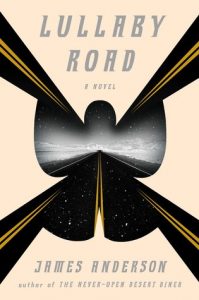 Ben Jones delivers necessities to the “desert rats” along the way to a small, isolated town in Utah. He keep his business to himself and ask his customers no questions. One day, while getting gas at the usual station, the owner informs him that he was left a package at one of the pumps. A man Ben knows only from tire purchases has left his child, guarded by a big dog. He can’t leave them out in the winter weather. As he prepares to leave the station, his “it’s complicated” neighbor rushes her baby to him to watch for the day. He now has two children and a dog to take on his treacherous drive to deliver items necessary to survival to the people whose experiences have led them to choose a life in a harsh climate away from society. The tale reads like a day in the life of Ben Jones as he interacts with characters who barely accept him for practical purposes, though this seems a non-typical day with the children, and then his friend, the “preacher,” a victim of hit-and-run. The story moves away from the surprise babysitting, down the path of mystery driver investigation, returning to the child at the end.
Ben Jones delivers necessities to the “desert rats” along the way to a small, isolated town in Utah. He keep his business to himself and ask his customers no questions. One day, while getting gas at the usual station, the owner informs him that he was left a package at one of the pumps. A man Ben knows only from tire purchases has left his child, guarded by a big dog. He can’t leave them out in the winter weather. As he prepares to leave the station, his “it’s complicated” neighbor rushes her baby to him to watch for the day. He now has two children and a dog to take on his treacherous drive to deliver items necessary to survival to the people whose experiences have led them to choose a life in a harsh climate away from society. The tale reads like a day in the life of Ben Jones as he interacts with characters who barely accept him for practical purposes, though this seems a non-typical day with the children, and then his friend, the “preacher,” a victim of hit-and-run. The story moves away from the surprise babysitting, down the path of mystery driver investigation, returning to the child at the end.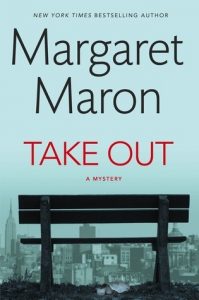 Sigrid is moving on from Nauman’s’s death, investigating a double homicide in a neighborhood with two suspects. A homeless man and a minor star of the opera industry grown old wind up dead together on a park bench in front of one’s family and the other’s friend, both of whom are suspected of killing one man purposely and the other accidentally through sharing their takeout from the nearby restaurant. Sigrid simultaneously searches for the answer to the mysterious reason for Nauman’s’s journey on which he died.
Sigrid is moving on from Nauman’s’s death, investigating a double homicide in a neighborhood with two suspects. A homeless man and a minor star of the opera industry grown old wind up dead together on a park bench in front of one’s family and the other’s friend, both of whom are suspected of killing one man purposely and the other accidentally through sharing their takeout from the nearby restaurant. Sigrid simultaneously searches for the answer to the mysterious reason for Nauman’s’s journey on which he died.